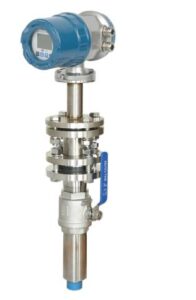Are you responsible for the maintenance of an electromagnetic flow meter? Do you need help on how to calibrate a magnetic flow meter? If you do, then you must know that proper calibration is essential to ensure accurate readings.
This blog post discusses the steps necessary to calibrate your flow meter properly, why it is important and how to get the standard meter method. We’ll also provide some tips on troubleshooting if you encounter any problems during the calibration process. But first, let’s define the following
What is Calibration?
Calibration compares the measurement values gotten through a device after a test and the calibration standard to determine the device’s accuracy (e.g., a tested flow meter). Calibration is important in the instrumentation factor and is used in the oil, gas, manufacturing, and petroleum industry.
What is a Magnetic Flow Meter?
A Magnetic FlowMeter is also called a mag flow meter, mag meter, and magnetic flow meter. It is a volumetric flow meter used to measure the velocity of conductive liquid in pipes. These liquids include; acids, caustic, water, and slurries.
This instrument is independent of viscosity, fluid density, temperature, and pressure and can determine high measurement accuracy with sensitive response and no mechanical inertia. Its lack of body parts allows it has good stability. It is used in gases, water resources, petroleum, sewage discharge, and textile industries for recording professionally gotten measurements.
What is Flowmeter Calibration?
Magnetic Flowmeter calibration involves adjusting the flow meter’s metering to attain high accuracy. A flowmeter calibration compares the flowmeter’s originally set or preset scale and the standard measurement scale or calibration factor.
The reason for negligible percentage error, calibration is one of the most important solutions in instrumentation for industries working with any conductive liquid to attain precise readings and measurements.
Why Should the Flow Meter Be Calibrated?
A standard electromagnetic flowmeter must be of high linearity and accuracy before being used. The flow meter is compared and adjusted to meet the predetermined standards until there is no need for any further adjustment.
Flowmeter manufacturers calibrate their products before sending them out, but sometimes recalibration must be done by the facility which uses the flowmeter.
Flow meters go through several processes before they are finally ready for use; some include coil winding, electrode, and lining processing. These processes could lead to dispersion and errors in the flow meter.
A corrective process is then required to adjust and correct the error. This process uses the actual flow calibration to calculate the slope and intercept values of the sensor equation. The slope and intercept values determine how accurate the electromagnetic flowmeter is and if it is up to standard.
Flow Meter Calibration vs. Recalibration
The flow meters’ calibration involves comparing their measurements with a standard flow measurement device after undergoing the same process. The scale of the flow meters is adjusted to produce a consistent value as the standard value.
On the other hand, recalibration is the calibration of flow meters that have already been used after going through the same conditions and must be done regularly because of the condition surrounding its use in the industry.
The Main Differences Between Flow Meter Calibration and Recalibration
Calibration is done before the flow meters are sent for use, while recalibration is done after the magnetic flow meter has been used. After calibration, several software tools are used to its measurement’s accuracy.
Factors Affecting the Accuracy of Flow Meters
After frequent use, the magnetic flowmeter meeting tends to drift, and this could be as a result of:
- Internal Surface Deposits
- Severe Contact with Chemicals
- Old Age
- Improper Use
- Contamination
- External influences include exposure to corrosion, pressure, temperature, vibration, dust accumulation, etc.
- Differences in Fluid Property
- Improper Installation
Importance of Calibrating the Flow Meter
Flow meters measure the speed and volume (flow rate) of fluid or gas passing through a pipeline, and calibrating it ensures accurate results are obtained.
The flow rate refers to the mean velocity gotten through a known volume of fluid or gas moving through a pipe.
Frequent maintenance and daily calibration operations are constantly done to maintain the correct measurements from the magnetic flowmeters.
How Often is Calibration Needed?
With no set rules on how often the magnetic flowmeter should be calibrated, the number of times it should be calibrated is based on the type of system used and how frequently it is used in the industry.
The fluid being measured is another reason why calibration might vary in industries. So, a magnetic flowmeter for highly toxic chemicals should be calibrated weekly or monthly.
Replacing the electromagnetic flowmeter parts could affect its calibration, and it should be calibrated because of using the flowmeter. When getting an accurate reading is not the problem, you could have the frequency of the magnetic flowmeter reduced.
What Could Occur If the Flow Meter is not Correctly Calibrated
If the magnetic flow meter has the wrong calibration, the flow reading will also be incorrect, leading to bigger problems. Examples of these problems are underfilling and spillages.
A flow reading of a greater or lesser number might mean a contrast between the actual and expected flow rate. A damaged pipe can be the result of using inaccurate readings.
How Do You Calibrate an Electromagnetic Flow Meter?
There are two common methods for calibrating the mag meter, and they are;
- The Static Mass Method
- The standard Meter Method
The Static Mass Method
The static mass method uses a liquid flow device using water and constant pressure from the environment, a weighing system, test pipeline, control equipment, and test and stops equipment.
Install the mag meter in the pipeline and ensure the water source is connected to a water flow. This water source provides enough water to flow through the calibration pipeline and is adjusted with the flow regulating valve to balance with the pressure from the environment.
The water flows into the weighing container via the commutator. Then start the pulse counter and timer at the same time. Take the temperature of the fluid during the weighing period and the density measure at that temperature to attain its volume.
After this practicalized method, you will have weight, time, temperature, density, volume, and flow pulse values. You can then compare the readings with the standard data, the meter’s volume indication, or cumulative pulse number.
The data attained can is used to calculate the meter constant and accuracy of the magmeter. The mass method system can attain an accuracy of 0.1%
The Standard Meter Method
The standard meter method consists of the liquid flow standard device, a test pipeline, a fluid force, a control device, and a standard flow meter. The fluid continuously passes through the tested flow meter and standard flow meter before its output and values are compared.
You could also use commutative flow values gotten after some time and compare them with the measurement of the new flowmeter to be tested. The gravimetric method is a more suitable option for liquid flowmeter calibration of water-based mag meters are then sent to a calibration laboratory.
The standard flowmeter cis based on the verification flow range or the verification flow point. This method is commonly used in the global flowmeter industry, and it is best for improving the verification efficiency and expanding the flow range.
Other Methods
The Standard Volume Method
The standard volume method is based on the standard volumetric method with dynamic measurement. On the pipeline, connect the flowmeter to be compared and the calibrated flowmeter in series. After obtaining results, compare the two measured values to find the error in the flow meter.









